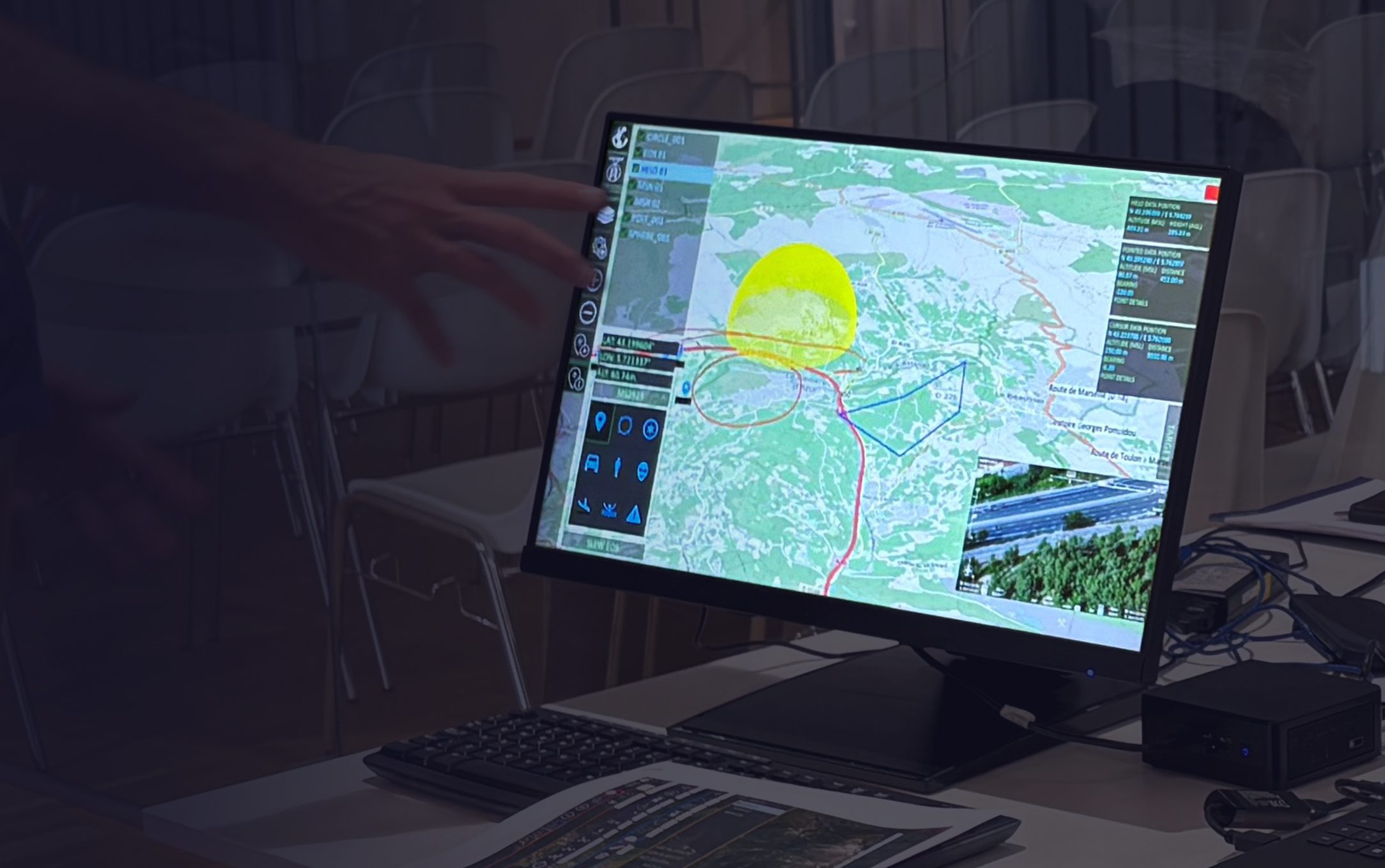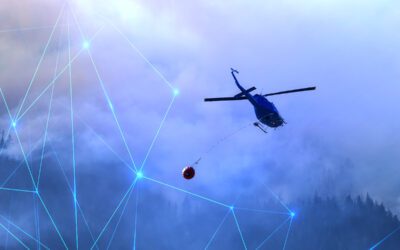An insightful look into the impact and uses of Augmented Reality for training.
For years, a singular approach to training and education meant that everyone was treated to a one-size-fits-all approach. Now, it’s recognised that people learn in very different ways, and the standard textbook approach simply doesn’t work for many.
Augmented reality in education has proved to be a game-changer, allowing everyone from elementary school children to highly skilled pilots, military aviation specialists, and helicopter crews to advance and learn new skills.
In this article, we will examine some augmented reality in education examples and explore the benefits of using AR for educational purposes. We will present some augmented learning examples, including details of the unique Asog training course offered by FlySight last month.
We will also explore the potential for augmented reality learning to expand and develop beyond its current uses and how real-world applications prove the effectiveness and advantages of AR learning. Keep reading to discover how FlySight’s OPENSIGHT is at the forefront of AR solutions in the aviation industry.
What is augmented reality?
By overlaying digital layers onto real-world applications, AR can enhance a user’s experience of the world around them. Whereas Virtual Reality immerses the user in a virtual world, AR complements the real world and adds a new dimension to a user’s surroundings without disengaging them from the reality of their situation. This is what makes AR such a powerful learning tool, especially in more complex applications such as engineering, medicine, and aviation. AR offers a unique perspective and a very modern learning experience.
Why does it work so well for education?
A study by PwC* discovered that learners who trained with AR were four times more focused than those using standard e-learning techniques. They also learned up to four times faster than those using traditional learning methods, including book and classroom teaching. The level of engagement was also markedly higher, allowing for a faster degree of absorption even when tackling more complex subjects.
This combination of factors makes Augmented Reality examples in education particularly well suited for intricate aviation training, especially pilot training and intensive search and rescue training for aerial units such as helicopter crews. The fact that AR is already being used extensively in these fields means that the learning process immediately has relevance, and the systems and equipment used are already familiar. This removes yet another barrier to effective learning.
AR for pilot training
Pilots operating in high-pressure environments have to be the very best. Whether it’s piloting an aerial unit for law enforcement or military operations or leading a search and rescue crew into hazardous conditions both on land and at sea, training is never a one-off process. As the technology for aerial units advances and new best practice techniques are developed, pilots have to undergo a continual training and retraining process. Anything that can make that process easier, quicker, and more cost-effective is to be welcomed.
AR has a hugely important role to play, and thanks to interactive technology developed by FlySight and others, it can be easily grandfathered into hardware that pilots are already familiar with.
One of the most effective ways to teach a complex subject is to break it down into smaller ‘chunks’. The modular design of AR lets instructors do precisely this, ensuring that a trainee is completely comfortable with a single concept before moving on to the next. The chances of misunderstanding a single concept are reduced, and the fact that AR training allows trainees to see how the new information works in situations they are already familiar with gives it far more relevance. This, in turn, makes it easier for trainees to grasp new concepts and integrate them into their existing knowledge bank.
AR for training ground crew and maintenance teams
Any examination of augmented learning examples also includes its use for training ground crew and maintenance teams. These highly skilled technicians are responsible not just for the efficiency of the vehicles but also for the safety and well-being of the crew. As aircraft continually develop and evolve, so must the skill set of those who look after them.
AR allows complex subjects to be more interactive and easy to understand, presenting a three-dimensional view of, for example, a wiring harness or cockpit system. To see how a system fits into its environment in 3D rather than looking at a flat wiring diagram makes understanding where a junction leads to or where a vital connection sits in relation to other electronic systems much easier.
It is not just a matter of simplifying a subject but also enabling everyone to understand the concepts involved clearly and quickly, no matter what learning process best suits them.
Search & Rescue – saving lives through better training
Every emergency situation requiring a SAR intervention is different, so it is almost impossible to plan for every eventuality. Continual training is a crucial factor in ensuring SAR teams are operating as efficiently as possible, and the use of AR training is elevating their skill set to new levels.
AR—and, to an extent, Virtual Reality—both provide a whole new perspective on classroom training sessions for SAR teams. The aim is to make each scenario as realistic as possible to test how team members would respond to various situations. With AR, the scenarios can be specifically programmed to be adaptive based on the trainees’ responses.
As with pilot training, the fact that AR is already a significant role player in modern Search & Rescue means that classroom training has real relevance and can be quickly and easily incorporated into operational procedures. Because of the fluidity of real-life Search & Rescue operations and the way that AR uses machine learning to adapt, the plausibility and accuracy of the scenarios it creates emulate the changing conditions and unique variations of a real-world situation. That cannot be achieved through traditional classroom learning techniques.
ASOG Spring Course – Flight training from FlySight
As innovators in the use of AI for mission operational systems, FlySight has been at the forefront of ASOG Spring training. FlySight has been sponsoring the PAvCon (Police Aviation Conference) event for several years, and in 2024 and in 2024 it wanted to follow up the course organized by ASOG for airborne sensor operators and technicians in the same location. It introduced the theory of mission management systems and associated sensors to skilled operators who want to expand their knowledge of advanced AI technology. The session provided insights into integrating and applying technologies like EO IR radar and mobile phone detection with AI mission management systems.
The key here is the level of integration between different systems – some already familiar to the trainees while others introduce new operational procedures and concepts – with the revolutionary OPENSIGHT system at its core. The curriculum covers a wide range of topics of interest to law enforcement and SAR teams, including intelligence, protection, and optimisation of search and rescue (SAR) missions. You can learn more about our AI training here or by contacting us directly.
The future of AR in education and aviation – How will the technology evolve?
The future will see many more augmented reality applications in education, not just in the aviation industry but across the board. The technology is evolving at an incredible rate, allowing teachers, educators and instructors to develop far more immersive education experiences as well as merging ‘hands-on’ learning with high-tech solutions.
Not only does AR represent a whole new way of learning, but it can be incorporated into almost any environment, from medicine to elementary schools, aviation and engineering to law enforcement and SAR. In the aviation sector, FlySight’s innovative AR operator technology continues to enhance and enrich the learning experience for both new crew members and the most experienced operators, adding to their toolkit of skills.
Platforms such as OPENSIGHT represent the next level in the evolution of AR as a teaching aid as well as an essential operational tool. You can get in touch to learn more about FlySight’s aviation systems and solutions today by visiting our Augmented Reality System page. Or get in touch with our team to discuss your requirements today.





